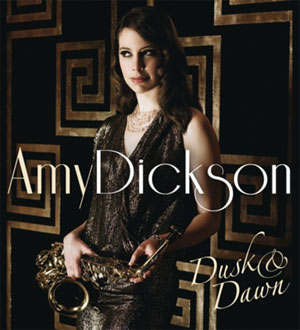CD review: Avi Avital Bach and Between Worlds

Mandolin virtuoso Avi Avital features on a double CD release from Deutsches Grammophon Avi Avital: Bach (June 2012)and Between Worlds (January 2014), to coincide with his tour to Australia with the Australian Brandenburg Orchestra. The title of the first of the two CDs Bach needs little explanation except to add the initials ‘J S’ before it to distinguish the composer from his relatives. The second CD, Between Worlds lets loose with music that is rooted in nationalist and folk traditions.
The mandolin is rarely heard in the classical halls of Sydney, the most recent appearances were possibly during Vladimir Ashkenazy’s Mahler odysseys with the Sydney Symphony. It is an unusual instrument in which to specialise – but not so surprising given its origins and its chameleon like ability to adopt authentically, a spectrum of styles.
Bach features 2 Concerti for harpsichord and strings – in D minor BWV 1052, and in f minor BWV 1056, the Violin Concerto no1 a minor, BWV 1041 and the Sonata for flute in e minor no 5 BWV no 1034.

It is a seductive sound and his playing is dazzling. Avital has transcribed for the mandolin, music originally written for three other instruments. The texture is different without being distorted. He achieves a bright and brilliant articulation in the works for harpsichord, a more lyrical virtuosity in the violin concerto and a mesmerising woody legato in the flute sonata, demonstrating not just the adaptability of the instrument but the versatility of his playing as well. His tempi are brisk and energised without being rushed and the slow movements are taken with becalming sensitivity.
On this CD, Avital performs with the Kammerakademie Potsdam, with Shalev Ad-El, harpsichord, Ophira Zakai, theorbo and Ira Givo, cello doing more than ample justice to the sounds of the baroque.
Descended from the medieval gittern and the Renaissance mandore, the mandolin is a member of the lute family. Its strings are plucked with a plectrum, a quill or the fingers. The earliest surviving music specifically for the mandolin is in a Florentine manuscript c 1650-70. Central to the court music of the 16th and 17th centuries the mandolin appeared regularly in dance music. Along with this, it’s relationship to the oud and to the guitar make Avital’s dance and folk based claims on his second CD entirely legitimate.
 With Between Worlds Avital extends a personal invitation to the listener to go on a journey with “the 20th century composers who introduced the tunes and the spirit of folk traditions…. into their own ‘classical’ art.”
With Between Worlds Avital extends a personal invitation to the listener to go on a journey with “the 20th century composers who introduced the tunes and the spirit of folk traditions…. into their own ‘classical’ art.”
In performing the 25 tracks on this CD, Avital playing mandolin and mandola is joined by other virtuosi reflecting the influences of klezmer, chamber music and gypsy traditions. Playing stringed instruments – and that includes the harp -percussion, piano accordion and woodwind, they travel from Georgia (Sulkhan Tsintsadze d 1991), through Romania (Bartok’s Romanian Dances)and Bulgaria, with an Iberian flavoured detour adding Falla’s Siete Canciones Populares Española, music by Piazzolla and Villa-Lobos’ Aria (Cantilena) from Bachianas Brasilieras No5. There is the delirious Czardas by Monti in which Avital is joined by accordionist Richard Galliano, the finale from Dvorak’s ‘American’ string quartet, music by Bloch and a traditional Welsh melody with harpist Catrin Finch.
Whilst Bach is seductive, Between Worlds is entertaining and the two together, along with the superb performances, are, as Avital says, “the ongoing play of opposing forces: outwards and in, exploration and return, adventures and home.”
Shamistha de Soysa for SoundsLikeSydney©
Avi Avital performs in Sydney with the Australian Brandenburg Orchestra on selected dates between May 7 and 16. Click here for concert information and here for our review of his opening night concert in Sydney.








One Comment